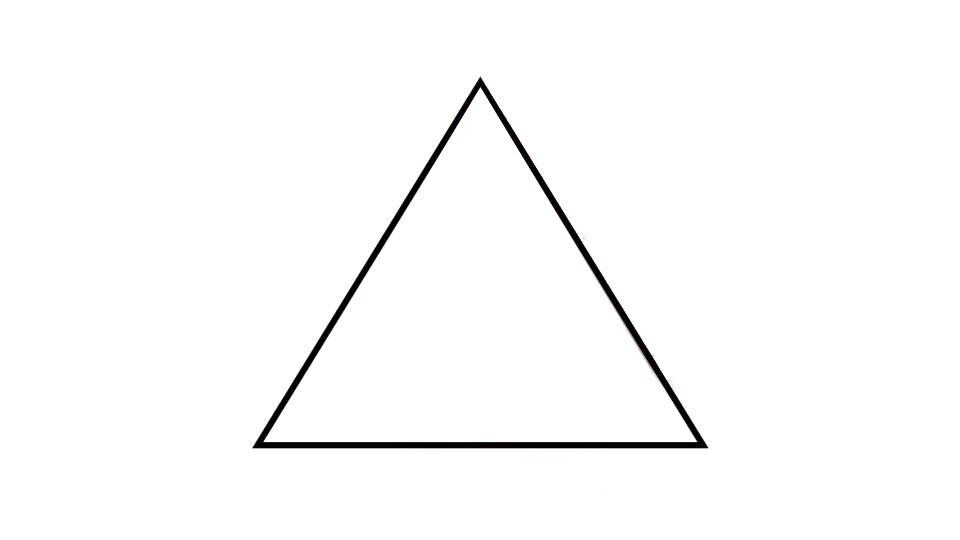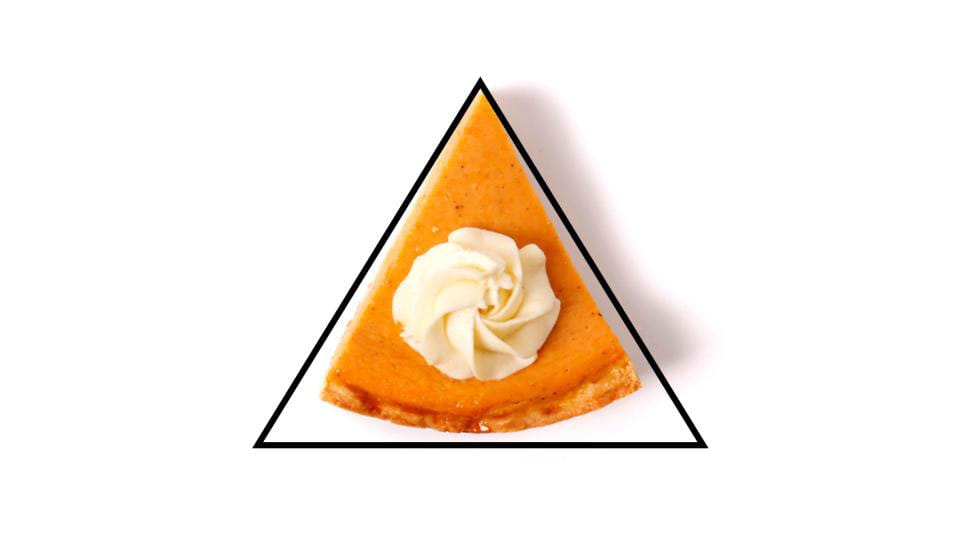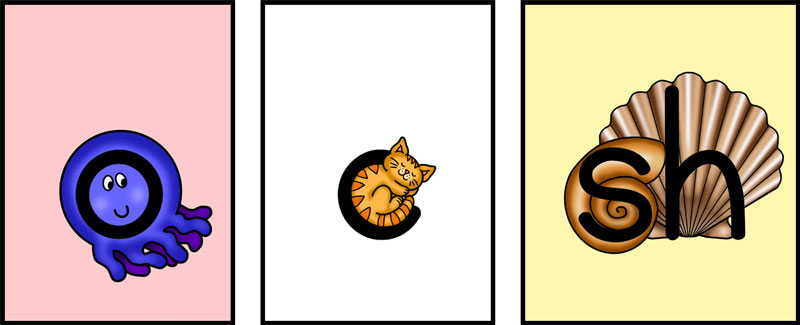Learning letter sounds is an important milestone for young children. As soon as they can connect a handful of graphemes to their corresponding phonemes, they’re on their way to reading short words like at, in, and sat. Making meaning through print with decodable sentences and stories will soon be within reach. Exciting times!

But with so many options at our disposal – songs, gestures, keywords, sandpaper letters, etc. – what’s the best way to teach those essential letter-sound connections?
I taught first grade for six years before becoming a special education teacher and later an intervention specialist. At the time, my district trained us in a popular phonics program that used a keyword approach to teach letter sounds. We showed students a card and asked them to repeat the letter name, the keyword, and the sound. The picture of the keyword was on the card but not embedded into the letter.
The majority of my first graders learned their sounds just fine. They mostly learned them from the same program in Kindergarten. By the end of the year, most of the children were reading on grade level. But I was stumped as to why it took so long for some of my students to learn letter sounds. This was especially true with the short vowels and often-confusing consonants like b and d. One of my kids seemed unable to retain very many at all no matter what I tried.
It wasn’t until I attended a training recommended by a speech-language pathologist friend during my time as a special education teacher that I was introduced to the idea of pictures of the keywords actually embedded in the letters. It made so much sense!
What Are Embedded Picture Mnemonics?
Imagine if I showed you this symbol and asked you to remember to say the /p/ sound every time you saw it.

Then I strung it next to some other shapes, all representing different sounds. What if memory wasn’t one of your strengths? That’s essentially what we ask students (especially young ones and those at-risk for reading struggles) to do every day.
Printed letters are abstract symbols with no inherent meaning. To a young child or older struggling reader, the letters abc may seem no different than Japanese characters or scribbles written by a toddler.
But what if I showed you that same symbol and turned it into a picture of a piece of pie? How likely would you be to remember that /p/ sound?

Providing a visual, in this case a photograph of a slice of pumpkin pie, acts as a cue to get your brain to connect the sound /p/ to the symbol .
A mnemonic is simply a memory support.
What Does the Research Say?
Not only does this concept make sense, it’s also backed by solid research. Dr. Timothy Shanahan gives his stamp of approval in his article, A Question I Hate: Should We Use Pictures When Teaching Phonics?, in which he cites various studies (Ehri, 2014; Ehri, Deffner, & Wilce, 1984; McNamara, 2012; Schmidman & Ehri, 2010). He explains the findings that using embedded mnemonic pictures can help children learn letter sounds more quickly and with less confusion. Sounds like a win-win! Not only that, but kids are better able to retain the letter sounds in long-term memory AND apply them in decoding and encoding practice.
By the way, Dr. Shanahan admits he hates that question only because as a professor to preservice teachers, he used to erroneously tell them that it was NOT a good idea to use pictures to learn letter sounds. He thought it would be too much for kids to memorize and that it’d just end up confusing them. However, after learning of the research cited above, he changed his stance. As Maya Angelou has said, “Do the best you can until you know better. Then when you know better, do better.” There’s no shame in admitting when we’re wrong!
The Dopamine Factor
One reason I personally prefer using embedded letter cards is that pictures are fun for kids. When our brains see something engaging, like interesting pictures within a letter, we are likely to pay more attention. When we pay more attention, we learn more. We also get a little extra dose of dopamine and that makes us feel good. When students learn letter sounds, especially with the help of embedded mnemonics that are fun to look at, it aids in feelings of success and growing confidence. When children feel good and successful, they’ll likely be more willing to learn new sounds and read more. Growth and nice feelings all around. What’s not to love?

Final Thoughts on Embedded Mnemonics
If you’re using a keyword approach, or any other approach mentioned at the beginning of this article, and visuals are not embedded in the letters, I’m not here to tell you to drop everything and change. But if you have any students who are struggling to retain new sounds, or if you are in the market to adopt a new program or set of letter cards, then it’s definitely something to consider.
If you could use a free embedded-picture mnemonic alphabet to help your students quickly master letter sounds, I am giving away my set for free as a thank-you gift to all of my newsletter (also free) members.

By signing up with this link, you will receive a color and black-and-white set. You’ll also start receiving my monthly emails of structured literacy teaching tips.
Using embedded picture mnemonics to teach letter sounds has been one of the best instructional decisions I’ve ever made. The process was less intimidating and more engaging than the approaches I’d tried with my students before. If you decide to give it a try, I wish your students success in mastering those sounds so they can be well on their way to reading with confidence!

